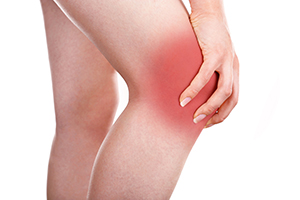Health Blog
Exercise and physical therapy help patients with knee arthritis

Unclear if additional sessions make therapy any more effective
Osteoarthritis (OA) is a common disorder in which cartilage that normally surrounds and protects joints wears away gradually over time. Overweight or obese individuals and those over the age of 65 are also more likely to develop it. There are many treatments available for knee OA, including exercise that may be combined with manual therapy. In this type of therapy, a physical therapist performs manipulations and mobilizations with their hands to reduce pain and improve function. Unfortunately, it's not clear if the use of manual therapy adds any extra benefits to exercise alone. Some patients may also struggle to retain their improvements in the long term. One suggestion is to include "booster sessions," in which patients meet with their physical therapist regularly for weeks or months after their initial sessions to discuss their progress and help them with recommendations to keep improving. Once again, research is lacking on whether these booster sessions are actually beneficial for patients. For this reason, a powerful study called a randomized-controlled trial (RCT) was conducted to compare the effects of manual therapy, booster sessions and exercise therapy for patients with knee OA.
Large sample of patients randomly divided into four even groups
Individuals with knee OA were recruited to participate in the RCT and screened to determine if they fit the necessary criteria. A total of 300 patients were accepted for the study and randomly assigned to one of the following four groups: 1) exercise with no booster sessions, 2) exercise with booster sessions, 3) manual therapy with exercise (no booster sessions), and 4) manual therapy with exercise and booster sessions. The exercise program, which all four groups performed, consisted of various strengthening, stretching, agility and balance exercises. In some cases, additional exercises were added for the hip and ankle if patients seemed to need them. For manual therapy, different maneuvers were applied with manual force from the therapist to increase the flexibility of the knee and surrounding muscles. This all took place during 12 sessions, with those who didn't receive boosters doing all of them in nine weeks, and those with boosters spreading them out more evenly over 11 months. All patients also followed a home-exercise program twice a week or more that included the same exercises that were performed during the program. Participants were evaluated for pain, function and other measures before treatment, and then nine weeks and one year later.
All patients improve, but role of booster sessions and manual therapy not clear
After nine weeks, patients in all four treatment groups experienced significant improvements in all the outcomes measured. By one year, some of these effects had reduced, but for the most part, the improvements lasted. Despite this, the addition of booster sessions or manual therapy was not found to result in any greater benefits for patients after one year. Some positive effects were noticed, but they did not remain in the long term. Based on these findings, it appears that exercise is clearly effective for reducing pain and improving the function of patients with knee OA. Although booster sessions and manual therapy may help patients improve even more, it was not found to be the case in this study. Additional research is needed to investigate the role of booster sessions in more detail, but for now, patients with knee OA should feel confident that a physical therapist can effectively treat their condition with various exercises and help them achieve improvements that last in the long term.
-As reported in the August '16 issue of Osteoarthritis and Cartilage
September 15, 2017
Back to Health BlogHEALTH BLOG
- A Personalized Physical Therapy Program Can Assist with Whiplash
- Why Older Adults Should Incorporate an Exercise Program
- After an Achilles Injury, Physical Therapists Can Help with Recovery
- AI Can Answer Questions But It’s Best to See a Physical Therapist
- Physical Therapy Can Help With Symptoms of Wryneck
- Reduce the Risk of Pickleball Fractures By Taking Proper Precautions
- Physical Activity May Slow the Progression of Parkinson's Disease
- Too Much Salt in Your Diet? Learn the Dangers of High Sodium Intake
- Suffer From Lower Back Pain? Might Be Time to Take A Break
- The Road to Recovery: Preventing Re-Injury After ACL Surgery
RECENT ARTICLES

- 11 Possible Reasons Your Back HurtsJune 22, 2020

- What Conditions Can a Chiropractor Treat?May 25, 2020

- A Simple Guide to Better PostureApril 30, 2020

- Is Acupuncture Right for Me When I’m Afraid of Needles?March 30, 2020

- Stretching Done Right — How and When to StretchFebruary 26, 2020

